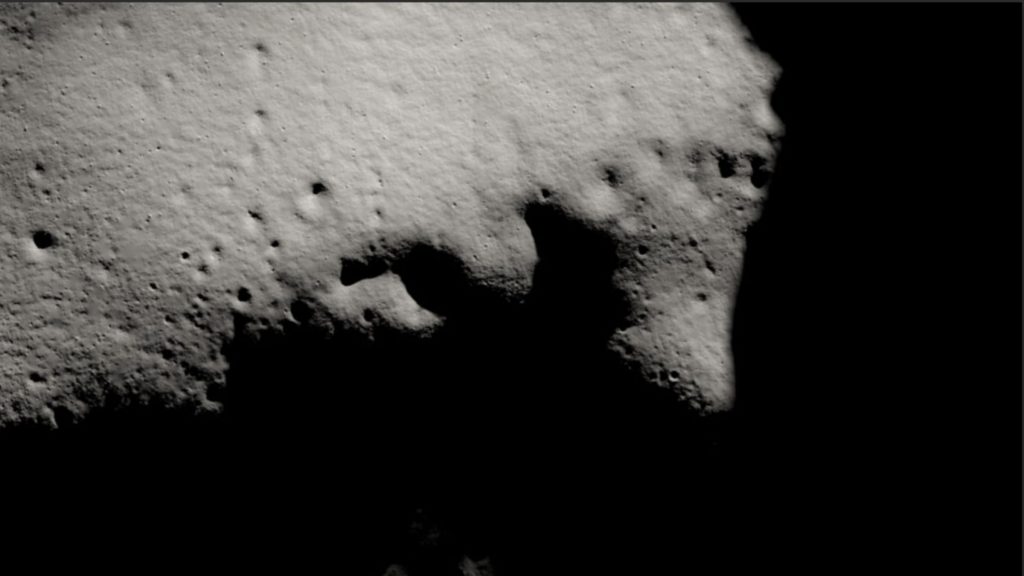The cow won’t jump over the moon, it will be stored there with all of Earth’s animals
In this version of the classic nursery rhyme, the cow won’t jump over the moon. The bovine, its barnyard brethren and the rest of Earth’s beastly bunch make it their new abode.
Well, at least at a microscopic level.

Research from the University of Hawaiʻi at Mānoa Hawaiʻi Institute of Marine Biology and Smithsonian Institution is pitching an out-of-this-world idea to preserve Earth’s animals in the event of a global disaster — storing their cells on our lunar companion.
A paper published in BioScience outlines a roadmap for the creation of a biorepository on the moon.
“Initially, a lunar biorepository would target the most at-risk species on Earth today, but our ultimate goal would be to cryopreserve most species on Earth,” said lead author Mary Hagedorn, an Hawaiʻi Institute of Marine Biology affiliate faculty member and research cryobiologist at the Smithsonian’s National Zoo and Conservation Biology Institute. “This is meant to help offset natural disasters and, potentially, to augment space travel.”
The study was authored by Hawaiʻi Institute of Marine Biology and Smithsonian scientists in collaboration with researchers from the National Ecological Observatory Network, University Corporation of Atmospheric Research, University of Minnesota and Harvard Medical School.
The team successfully cryopreserved skin cells from a reef fish known as the starry goby found (Asterropteryx semipunctatus), which is found in Hawaiian waters. These are the first samples created for the lunar biorepository and are now being stored at the Smithsonian.

The idea was inspired by the Svalbard Global Seed Vault in Norway, which contains more than 1 million frozen seed varieties and serves as a backup for Earth’s crop biodiversity.
But if we can plant the seeds of post-armageddon flora in nippy Norway, why did the team pick the moon to crystallize the creature cells?
Preserving animal cells requires temperatures that don’t naturally occur on Earth, down to -320 degrees.
Their cryopreservation would require a steady supply of liquid nitrogen, electricity and a team working round the clock, making the system susceptible to disruptions that could destroy the samples.
Craters located at the lunar poles are in perpetual shadow, with temperatures so cold that no electricity or liquid nitrogen would be needed, thus making them the perfect place for the solidified cell stock.
The samples could be stored underground or inside a structure with thick walls made of moon rock to block out the DNA-damaging radiation in space.
While the sperm cells and embryos of most wildlife species are unable to be reliably preserved, skin cells can be easily cryptopreserved.
Those cells can be transformed into stem cells and then used to recreate species. They would be the primary biological material stored in the lunar biorepository.
“We hope that by sharing our vision, our group can find additional partners to expand the conversation, discuss threats and opportunities and conduct the necessary research and testing to make this biorepository a reality,” said Hagedorn.
The next step for the team is a series of radiation exposure tests for cryopreserved fish skin cells and eventually conducting additional experiments on Earth and aboard the International Space Station.
The goal is to develop a prototype packaging able to withstand radiation and microgravity associated with space travel and lunar storage.
“Life is precious and, as far as we know, rare in the universe,” Hagedorn said. “This biorepository provides another, parallel approach to conserving Earth’s precious biodiversity.”
The researchers envision the lunar biorepository as a public entity to include public and private funding sources, scientific partners, countries and public representatives, with mechanisms for cooperative governance like that of the Svalbard Global Seed Bank.
Sponsored Content
Comments












